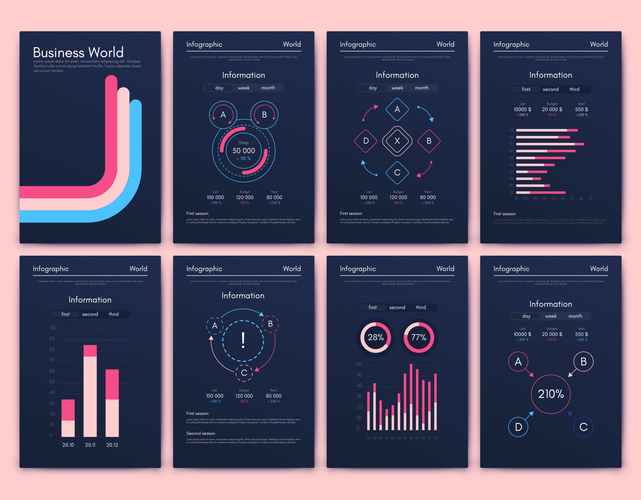Scrum vs Kanban: 5 Differences Between Sprints and Flow
Content
If your business is new to formal project management, Kanban can be an ideal starting point for introducing project practices, standards, and tools. Because bottlenecks are a constant worry with Kanban, which is all about a continuous, looping flow. To avoid having too many projects in the “in progress” column, the Work In Progress limit is an essential statistic. By visualizing the process and enabling Kanban teams to keep track of each item, the Cumulative Flow Diagram also helps to reduce bottleneck issues.
You can see what the members of your team are working on and have meaningful conversations about the work they are doing, making the world seem just a little smaller. Visualizing incoming and planned work on a Kanban board allows you to make better trade-off decisions based https://globalcloudteam.com/ on work priority and overall strategy. A Kanban board allows team members, whether onsite or remote, to communicate status updates in real time. Typically, team members spend a great deal of time collecting, consolidating, and communicating information about project status.
Parabol: One Tool For All Your Agile Ceremonies
So there’s supposed to be kind of this negotiation that goes on between, ‘This is what we need built’ and the dev team saying, ‘Well, that’s going to be too hard, if we do it that way. They might allocate 20 to 30 percent of their time to a two-week proof of concept, Quant said. But as a team’s capacity grows these individuals will likely need more support. Commonly, three principal categories — to-do , in progress and done — lay the foundation for production. Jeff Link is a Built In contributing reporter covering design, UX and product development. His work has appeared in Fast Company, Dwell, Architect and Green Building & Design.

If a problem arises , members can quickly discuss in person the details of the change, and come up with a way to best solve the problem. Is an Application Lifecycle Management platform with strong software development capabilities for regulatory industries, specifically aimed at the automotive industry. To capture the WIP, the work that’s been completed and the work that must be done, Kanban uses a visualization tool known as a Kanban board. Points can be useful to assess a team’s velocity and anticipate the length of future projects.
Step 1: Product Backlog
Kanban is based on a continuous workflow structure that keeps teams nimble and ready to adapt to changing priorities. Work items—represented by cards— are organized on a kanban board where they flow from one stage of the workflow to the next. Common workflow stages are To Do, In Progress, In Review, Blocked, and Done. ➕ New items are added to the Scrum board at the start of every Sprint, whereas tasks flow infinitely through a Kanban Board. Kanban teams sometimes find the framework dull and repetitive with its ever-looping work process without a clear start or beginning.
- You have the option to structure your project and team well here.
- Because different tasks need to be completed by different individuals at different times, Kanban is helpful for streamlining that collaboration.
- We’re also here to help you get started with our guides on how to do scrum with Jira software and how to kanban with Jira Software.
- But kanban is an infinitely accretive process and, without someone assigned to groom the board, it can become cluttered and visually cumbersome.
- This might include businesses that frequently update their technology or initiatives to develop new goods.
- But it’s important to account for unforeseen activities or a planned leave by team members, etc.
- Improve your work processes and get better visibility across tasks with Kanban boards.
Project management done right can help a business or project run smoothly. In addition to Kanban tools offering a more flexible approach to both Scrum and Kanban, they’re easy for interested parties outside of the team to understand. Project managers, project sponsors, and team managers can view the team’s board at any time to get a quick, overall view of the project’s progress. Several times during a sprint a product owner will introduce future user stories to the development team. Developers get to ask questions, make sure they have a good understanding of the technical guidelines and estimate the effort required. If there are gaps in understanding, a product owner can meet again with stakeholders to provide additional clarity.
Scrum ceremonies
Kanban, which literally means billboardin Japanese, is a visual approach to project management. As the name suggests, Kanban workflows are arranged on a Kanban board, where the team can visualize them as a group. This visual planning helps teams collectively prioritize tasks, minimize cycle time, and ship work earlier and more often. Scrum metricsare data points scrum teams can use to improve efficiency and effectiveness. They can inform decision-making and help teams become more efficient in planning and execution.

Measures the work cycle being completed through the principle of Work in Progress . The divided columns are interconnected and tasks are gradually pulled from the leftmost column to the rightmost column . Kanban rules are adopted to figure out the amount of work that can be ‘in progress’ and handled at a given time.
Kanban vs Scrum: what’s the difference?
For instance, the focus of Kanban is on workload rather than time. In traditional Kanban boards, this meant there were no end dates set, and deliverables were at risk of moving slower than needed. Plus, Kanban allows you to focus on the status of each task. So if your project deliverables have multiple discrete statuses, with different people responsible, Kanban can help you monitor each stage of the process. Wrike Blog Latest news and best practices on project management. Kanban Boards Instantly view project progress and create customized workflows.

Retrospectives help instill the concept of relentless improvement—one of the SAFe Core Values, ensuring that the team continually improves. While optional, teams may conduct a retrospective, every iteration aligned with the ART or at least once per PI, typically just before the ART’s Inspect & Adapt (I&A) event. In this way, the kanban scrum hybrid knowledge from their team retrospective can inform the problem-solving part of the I&A. This makes Kanban a suitable option for projects that are extremely versatile while Scrum is better for projects that require work to be completed in batches. Kanban gives the freedom of making decisions to the individual working on the task.
Kanban vs. Scrum At a Glance
Once this has been done, the next step is to construct the team’s Kanban boards with correct columns. You want a continuous delivery of features and improvements rather than delivery in fixed releases/cycles. Kanban is a better fit for teams that strive for consistent delivery of features and updates rather than working with mvps and releases of iterations. The true key to finding the method right for your team and process is looking into what you’re currently doing.

Leave your comment